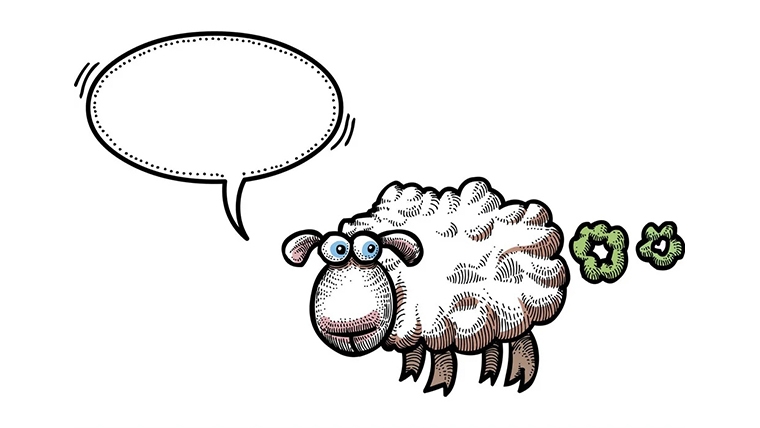
Maternal sheep production is reliant on feeding and maintaining ~18.5 million breeding ewes through the winter months and successfully rearing at least one lamb.
Sheep breeders can obtain breeding values for their stock, expressed as $ gross profit per breeding ewe. The sustainability and therefore profitability of this system, however, is facing a new threat as awareness grows of the magnitude and impact of ruminant methane emissions on the environment.
Strategies, such as carbon taxes on livestock production, have been put forward to protect the environment and to maintain global food security. Independent breeding strategies exist for increased production and for reduced methane emissions but, to date there has been no data to show whether these breeding objectives might be synergistic, neutral or antagonistic.
Ten years ago, a divergent flock of sheep was created to evaluate the effects of selection for methane on other breeding objectives. Here we describe the main results and describe the flock divergence for methane and other traits over the ten-year period.
Suzanne Rowe has been leading research on a flock of 200 breeding ewes (originally selected from extremes of 1,000 genetically diverse animals from national progeny test flocks) which have been selected for divergent methane emissions over a ten-year period. Sheep were ranked for breeding using measures from respiration chambers.
Over this period, a number of proxies have been investigated and effects of selection on methane emissions, production traits, feed intake, carcass and milk quality have been evaluated. The lines differ on average by 10-12% for methane emissions. Low methane animals appear to be economically favourable, grow more wool, have smaller rumens, are leaner, have different microbiomes and differ in fatty acid profiles in muscle.
Methane yield has been shown to be heritable and therefore under host control. Breeding for lowered methane emissions has been successfully shown to be a permanent and cumulative strategy for the mitigation of methane in sheep. This strategy, however, has resulted in physiological changes affecting the rumen, feeding behaviour, outputs from the rumen and resulting body composition. These changes appear to be economically favourable, however given the limited size of the flock involved these results require validation on a much larger scale. Including methane as part of the national breeding objectives would enable the selection of animals that are low emitters whilst efficient for production.
This indicates that breeding is a credible strategy for the mitigation of greenhouse gases from livestock. This is particularly pertinent when considering the targets set by the Paris Agreement, one of the first of which, is to reduce global greenhouse gases by 30% by 2030.
Angus Kebbell is the Producer at Tailwind Media. You can contact him here.
4 Comments
The smaller rumen is likely to have important implications in situations where sheep are relying on feed of modest ME quality. Large rumens are there for a purpose. Experienced sheep farmers understand that if sheep are to perform well on a particular land class, then those sheep need to be reared and evaluated on that land-class.
KeithW
It will depend on how much smaller the rumen is, it’s not necessarily a ‘small’ rumen, and also the positive impacts on other productivity traits in the trial so far might mean it isn’t a significant impact. Methane represents a loss of energy so the smaller rumen may still be more effective. Be interesting to see what is found as it’s tested further.
Genotype x Environment effects do occur (facial eczema is the classic example), but I understand they aren’t as widespread as are sometimes thought. The good thing now is with the Central Progeny Tests and Across Flock Analyses these effects can be examined further more easily.
It’s interesting stuff, to see where it leads. Irrespective of GHGs, less loss of energy from rumination is an opportunity, especially as the individuals already exist in the flock.
Aaron,
Both you and I will be watching the low emission work with great interest, and I am confident we will be hoping for the same outcome. I am simply offering caution that what works under specific conditions where feed ME quality may be higher than average may not transfer quite so well into average commercial conditions.
KeithW
That’s the common refrain about animals from studs, isn’t it. Key thing will be the relative differences rather than absolute. Be interesting to hear what the early adopters are already finding.

We welcome your comments below. If you are not already registered, please register to comment
Remember we welcome robust, respectful and insightful debate. We don't welcome abusive or defamatory comments and will de-register those repeatedly making such comments. Our current comment policy is here.